A Comprehensive Guide for Competitor's ASO Keywords Research
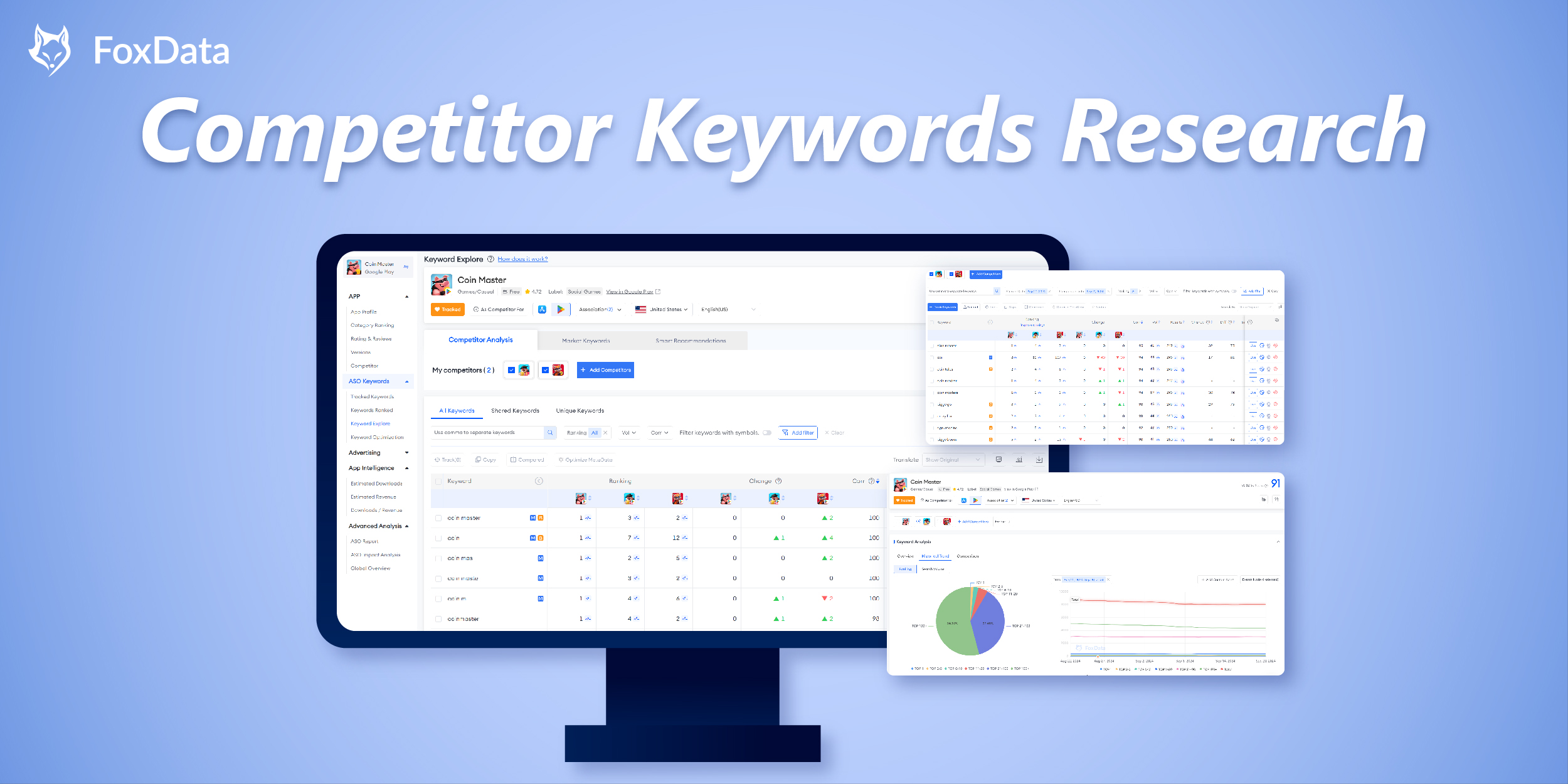
In today's highly competitive app market, ensuring your application stands out is crucial for its success.
One of the most effective ways to achieve this is through App Store Optimization (ASO).
By delving into the strategies and tools used by successful apps, you can uncover valuable insights and refine your own ASO efforts.
Table of Contents
☑️ Identify Competitors☑️ Analyze Competitor Keyword Rankings
☑️ Analyze Competitors' Metadata Keywords
Identify Competitors
Identifying competitors is a crucial first step in conducting ASO (App Store Optimization) keyword research.
Our ASO experts recommend two methods. You can choose the one that best suits your app or use a combination of both methods.
1. Top Apps in the Same Category
First, we need to clarify the market and category in which the app operates.For example, if we are promoting a dating app, our target market might be global or specific countries' social networking apps.
Next, we can find the top apps in that category and market for ASO keyword research.
By analyzing the keywords of top apps, we can understand current market trends and user search behavior. These keywords are usually optimized and validated, reflecting users' real needs and interests.
👏 Expert Tips: You can directly find your target competitors through the App Store or Google Play's app categories.
However, if you want to find your competitors more precisely, we still recommend using FoxData. Compared to app stores, FoxData provides more detailed category classifications.
Based on your actual needs, click on Top Charts or Downloads/Revenue Charts, filter by "store", "country", "time", "category", and tag to easily find the top competitors.
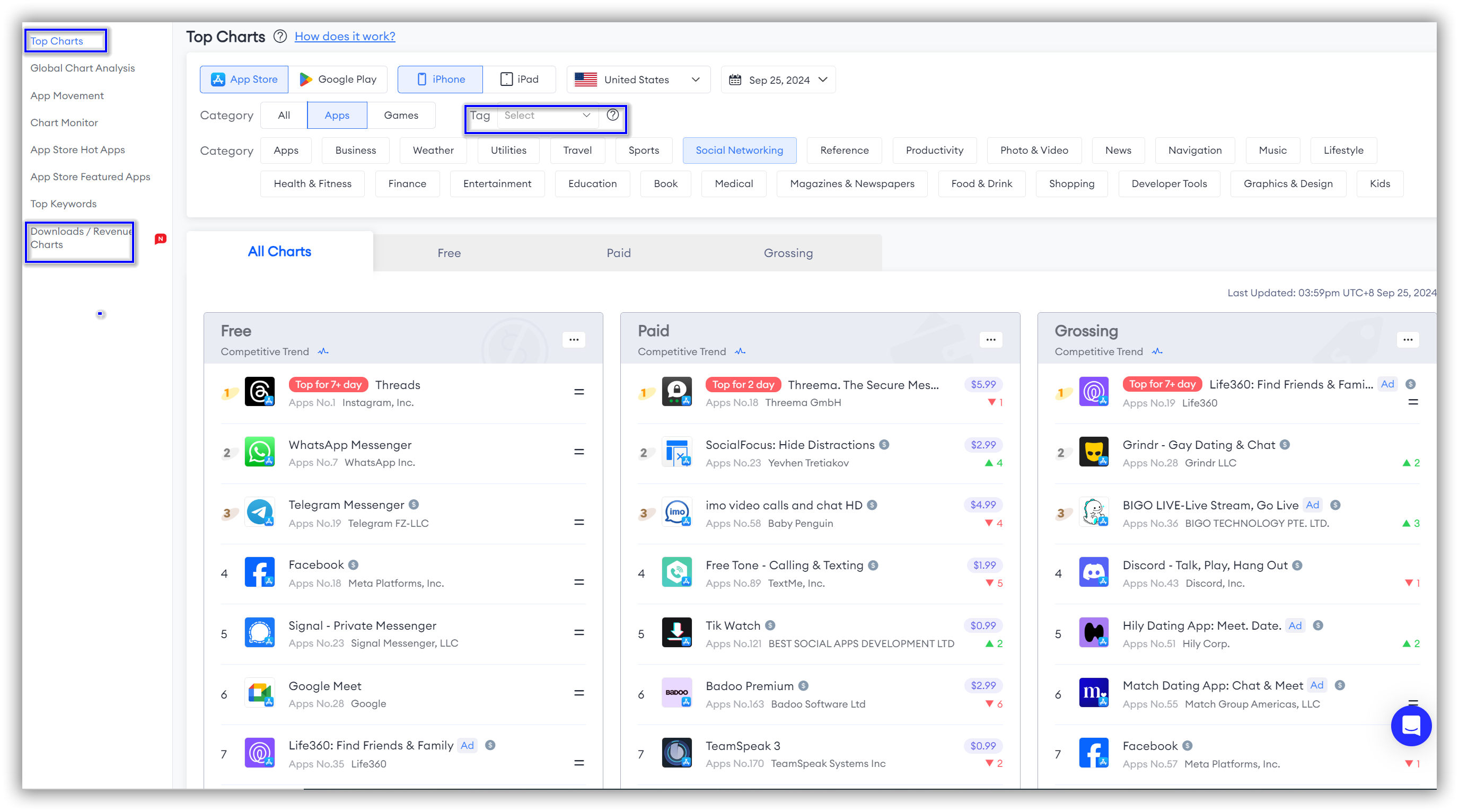
📒 Note: Don't forget to filter by "Tag", as this is key to helping you find competitors more accurately.
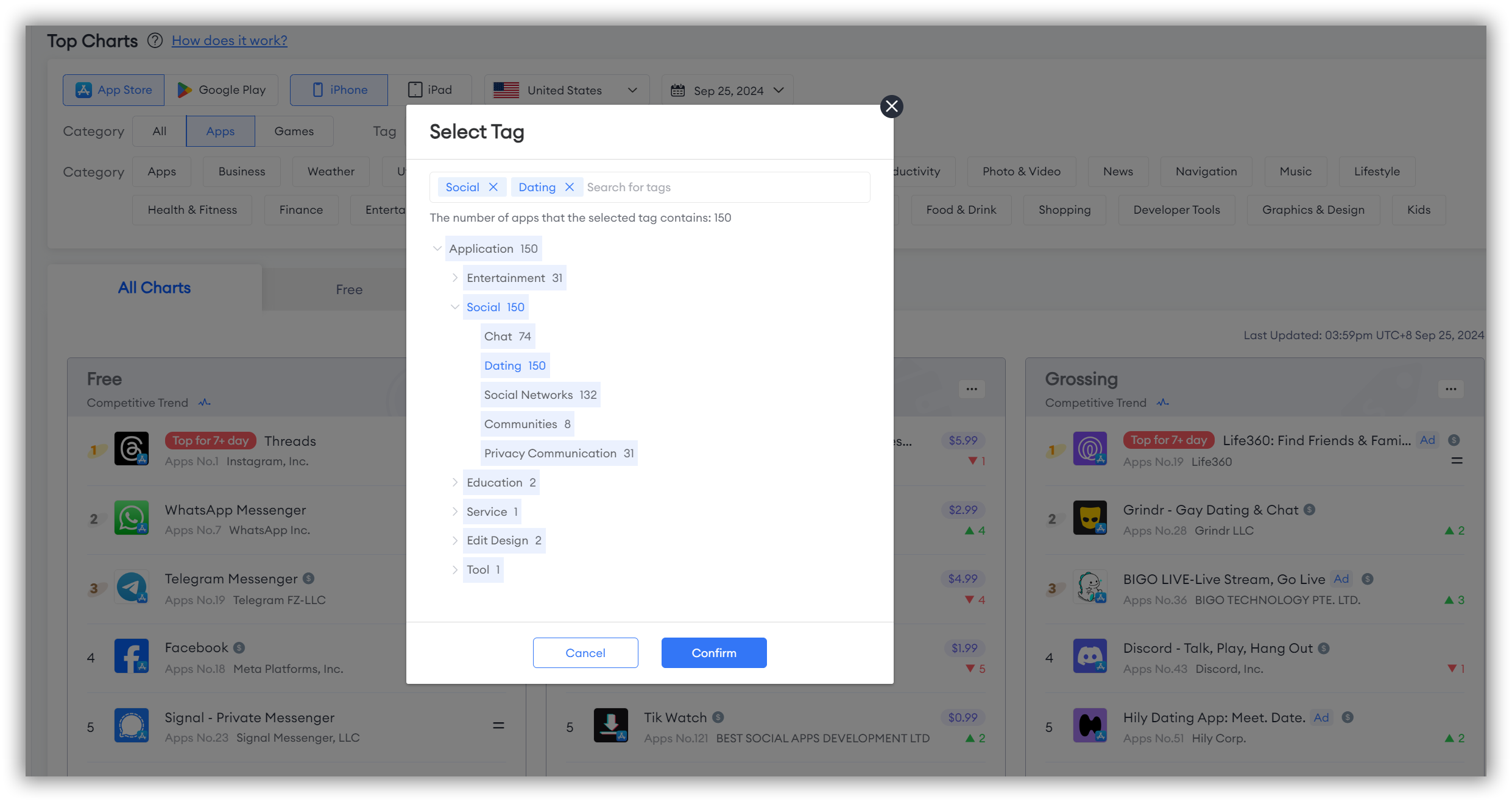
2. FoxData's Competitor Recommendations
If you want to find your competitors more quickly, you can directly use FoxData's "+Add Competitors" feature.
This feature is located under the ASO Keywords function and can help you directly research competitors' keywords.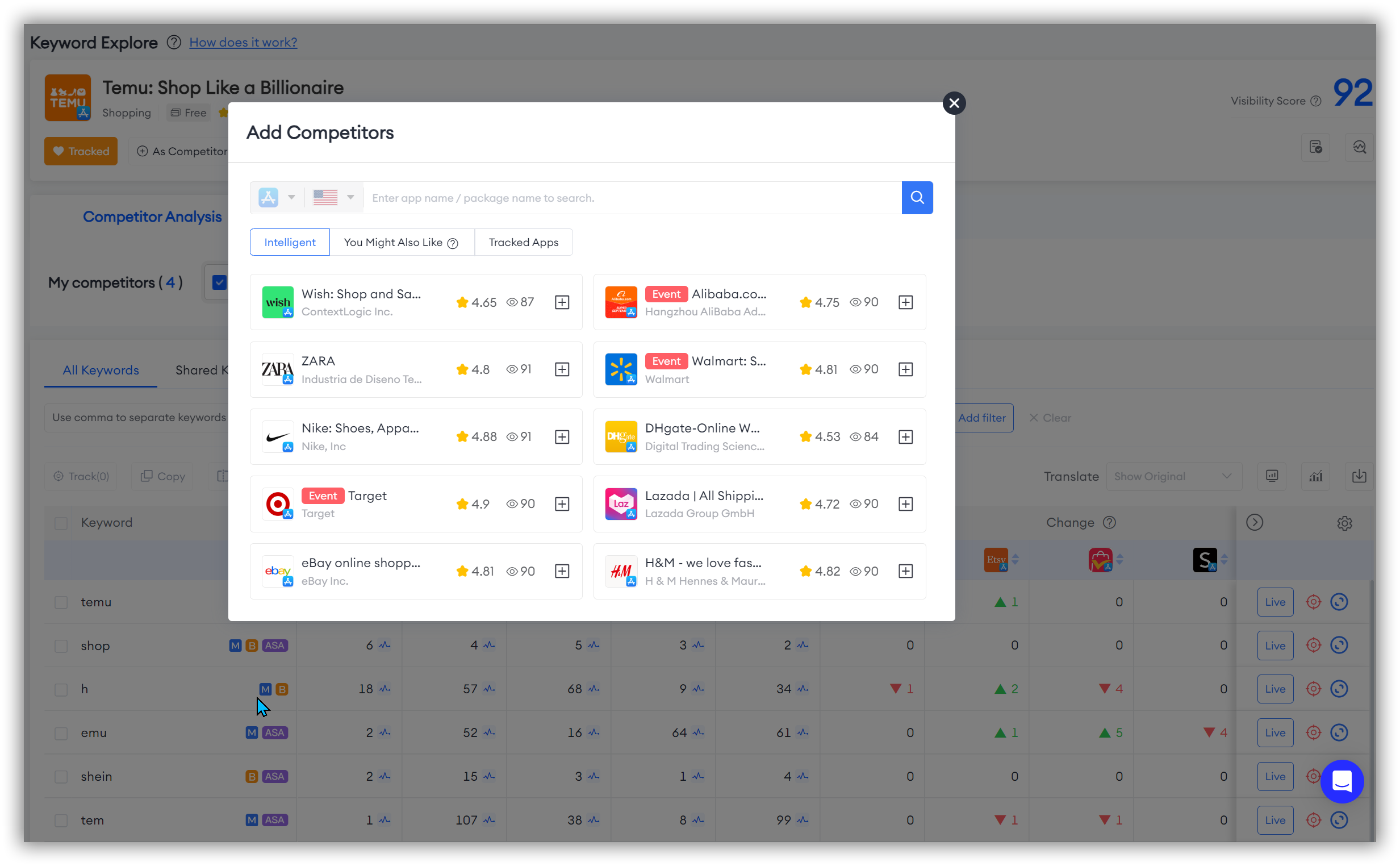
Using this feature allows you to find competitors with one click and quickly obtain their keywords.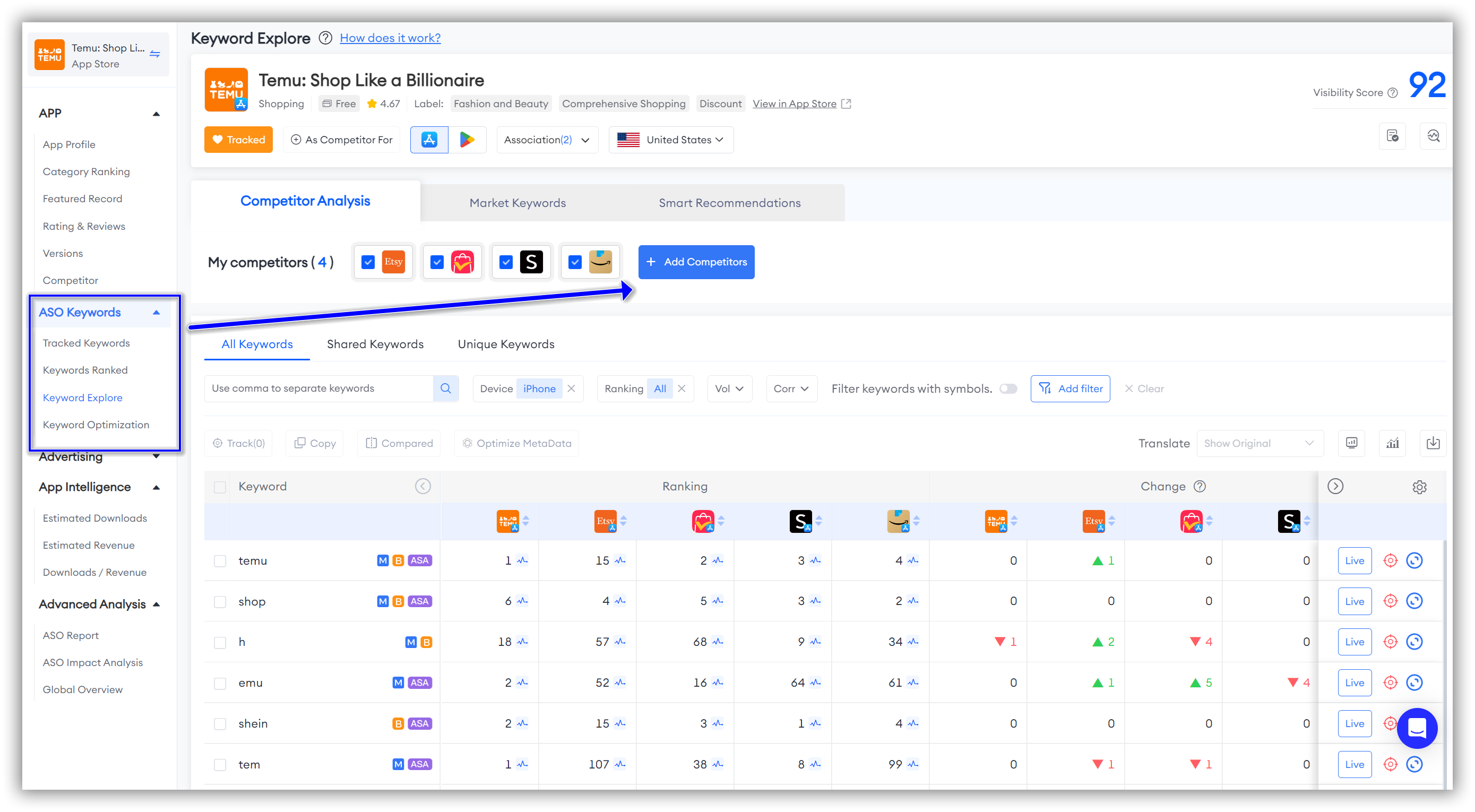
📒 Note: This feature is currently applicable in Keywords Ranked, Keyword Explore, and Keyword Optimization.
👉 Click here to quickly identify your app's competitors!
Analyze Competitor Keyword Rankings
After identifying your competitors, the next step is to check and analyze their keyword rankings. Once you determine the appropriate keywords for your app, you can add them to your keyword tracking list to monitor their performance regularly.
Let's take a look at how to analyze competitor keyword rankings.
1. Overview of Competitor Keyword Rankings
First, we need to have a basic understanding of the overall keyword rankings of competitors' ASO strategies. This will help you quickly identify competitors' ASO strategies and market opportunities and gaps.
By using Keywords Ranked, you can regularly monitor the overall keyword rankings of your competitors.
Overview
After selecting the competitors you need to study, you can directly view the overview and compare the keyword data over time. This includes key aspects such as keywords that have already ranked, Top 10 Keywords, New Keywords, and Keywords that Dropped out of the Top 50.
This will provide an overall performance view of competitor keywords, helping you quickly identify the ranking and coverage of competitors in terms of keywords.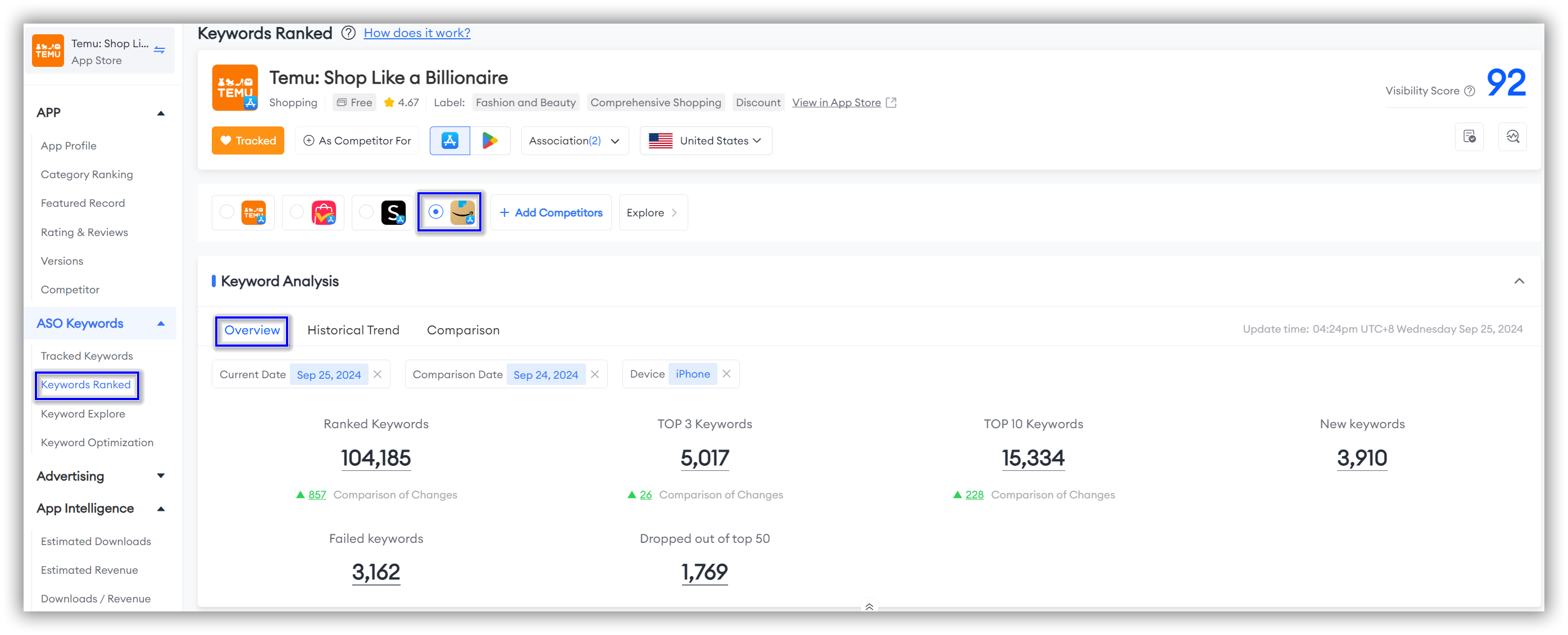
📒 Note: If you want to see specific keywords under the overall performance, simply click on the numbers in the six dimensions mentioned above. This will take you directly to the Specific Keyword Breakdown. See the illustration below:
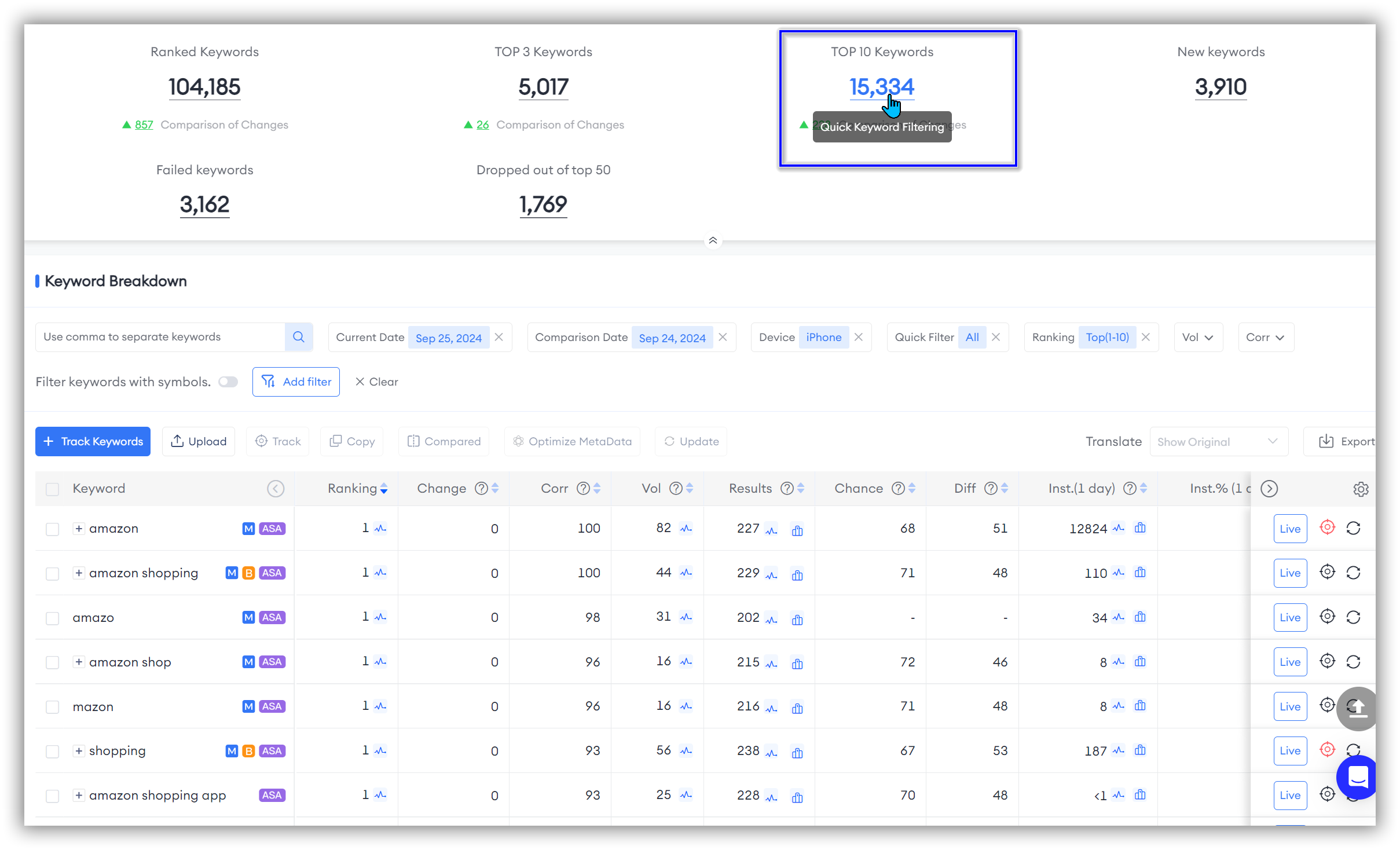
Want to quickly find out which keywords are the main traffic drivers for your competitors?
Just filter the keywords based on your needs. For example, if you want to study the top-ranking keywords for a specific app store, you can directly sort by "Ranking" in the filter bar or sort the keyword table in descending order.
👏 Expert Tips: Our ASO experts recommend studying all keywords that rank in the top 10.
Users usually decide within seconds which apps to download, so apps appearing at the top have a significant advantage. The top 10 keywords are typically the most frequently searched terms by users. By analyzing the top 10 keywords of your competitors, you can better understand user search intent and needs.
Knowing which keywords rank high for your competitors can help you determine which keywords need optimization or addition. This way, you can allocate resources more effectively and improve the relevance and search volume of your keywords.
Historical Trend
Besides studying the current keywords of your competitors, it's also crucial to analyze the historical trends of their keywords. This can help you understand the seasonal variations and long-term trends of your competitors' keywords, which in turn can assist you in performing seasonal ASO optimizations.
For example, if both you and your competitors are targeting the US market with shopping apps, it becomes essential to explore how top competitors prepare their ASO strategies leading up to Christmas.
FoxData provides you with a visual representation of your competitors' keyword rankings, allowing you to easily observe changes in their keywords over specific timelines. If there are any anomalies or consistent growth, you can quickly determine if these are influenced by ASO metadata changes.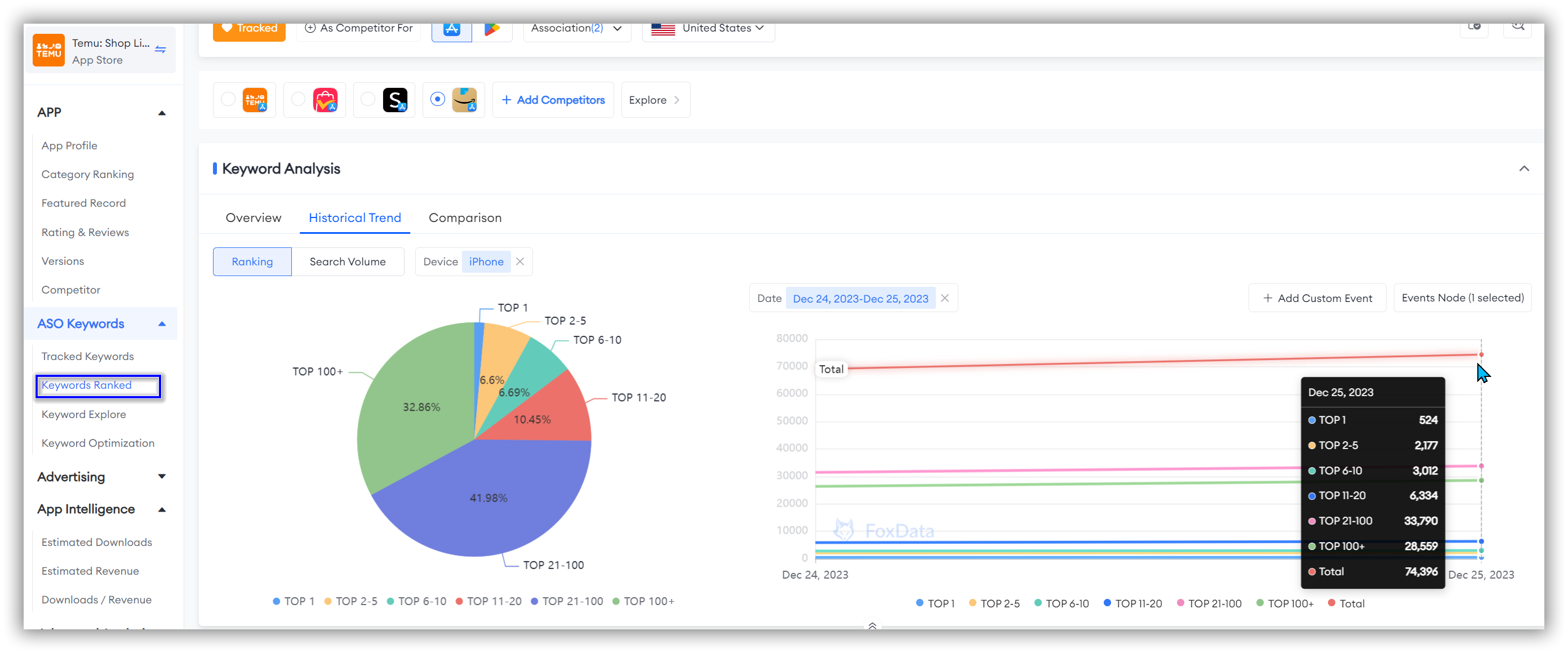
📒 Note: The orange dots on the horizontal axis of the line chart below represent Event Nodes. You can click on these to see if the event is related to changes in ASO metadata.
2.Monitoring Specific Keywords
After understanding the general keyword landscape of your competitors, the next step is to delve into the details and study the high-quality keywords of your competitors that can be incorporated into your own keyword list.
Top 10 Keywords
The top 10 keywords of your competitors generally have a substantial (medium to high) search volume, indicating that these keywords are frequently searched in the app store. These top 10 keywords are crucial for optimizing your own keywords.
Using FoxData's Keywords Explore - Competitor Analysis, you can quickly collect and study the keywords of different competitors.
By comparing these with your own app's keywords, you can eventually select the most suitable keywords from your competitors' top lists to incorporate into your own list.
This feature allows you to add up to four competitors at the same time, enabling you to simultaneously study and compare the keywords of four competitors and your app.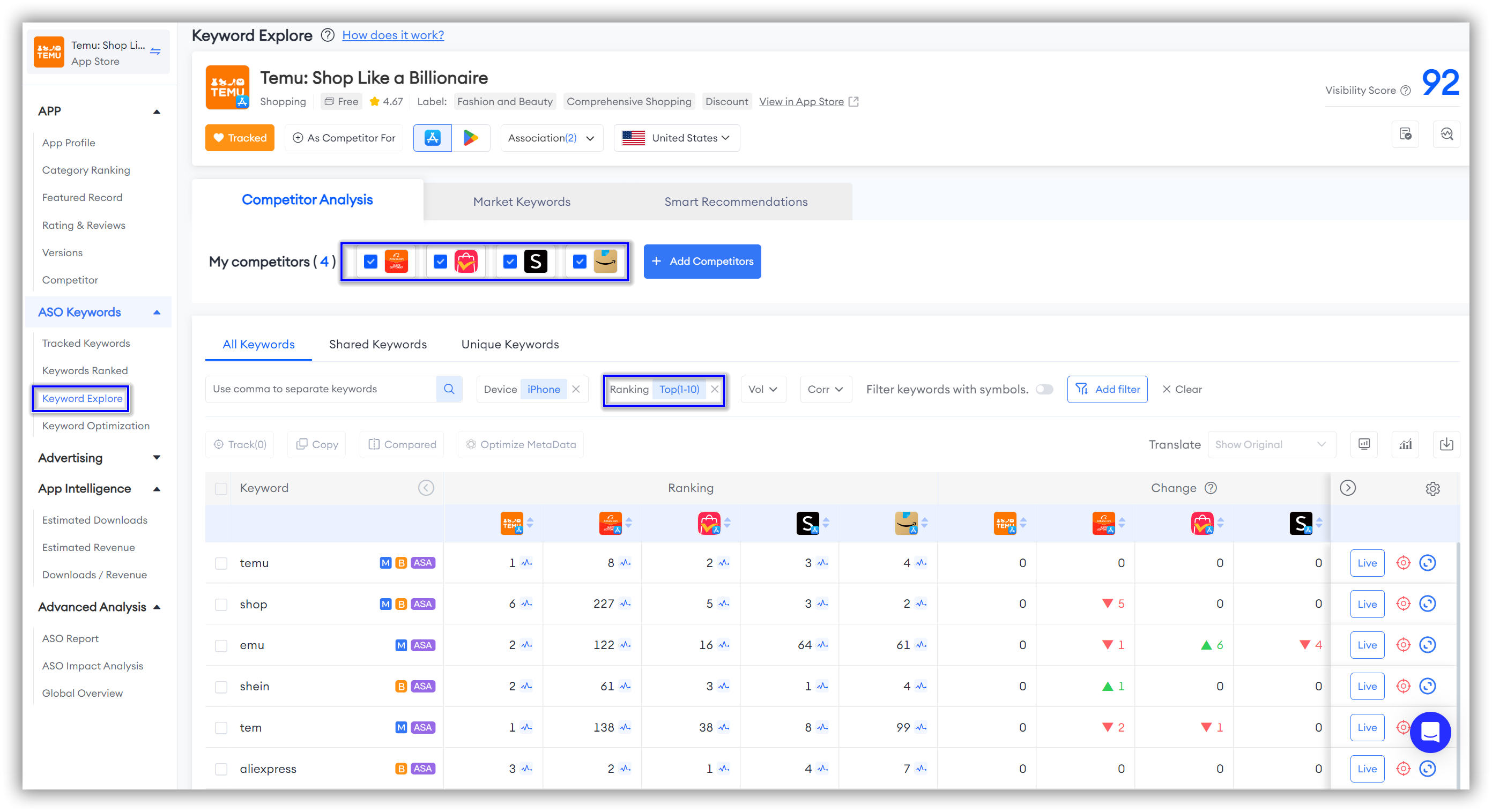
After making comparisons, FoxData also supports tracking the keywords you finally choose.
You simply need to select the keywords you are interested in and click "Track."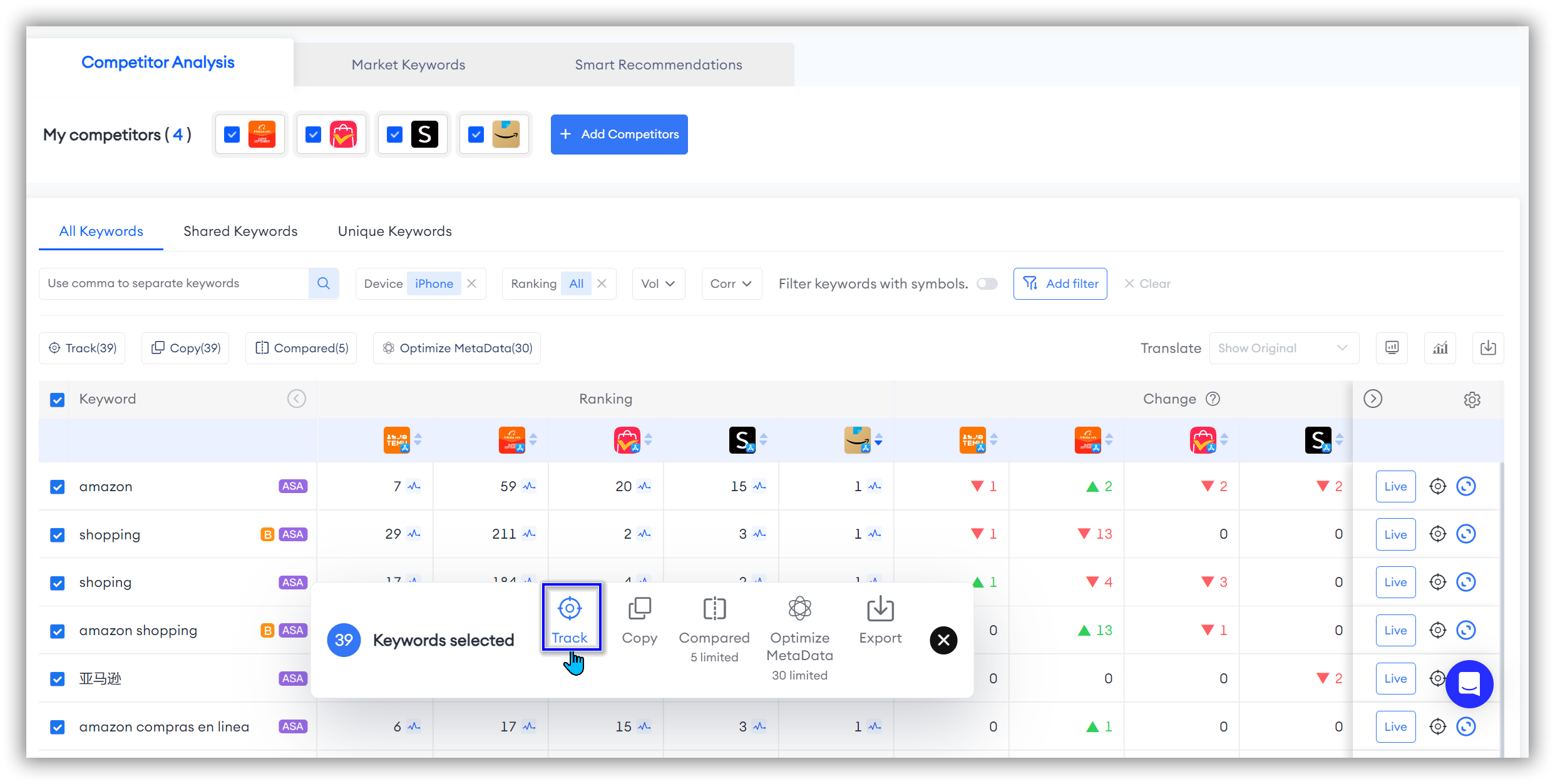
You can then continue to study these keywords in the Tracked Keywords section.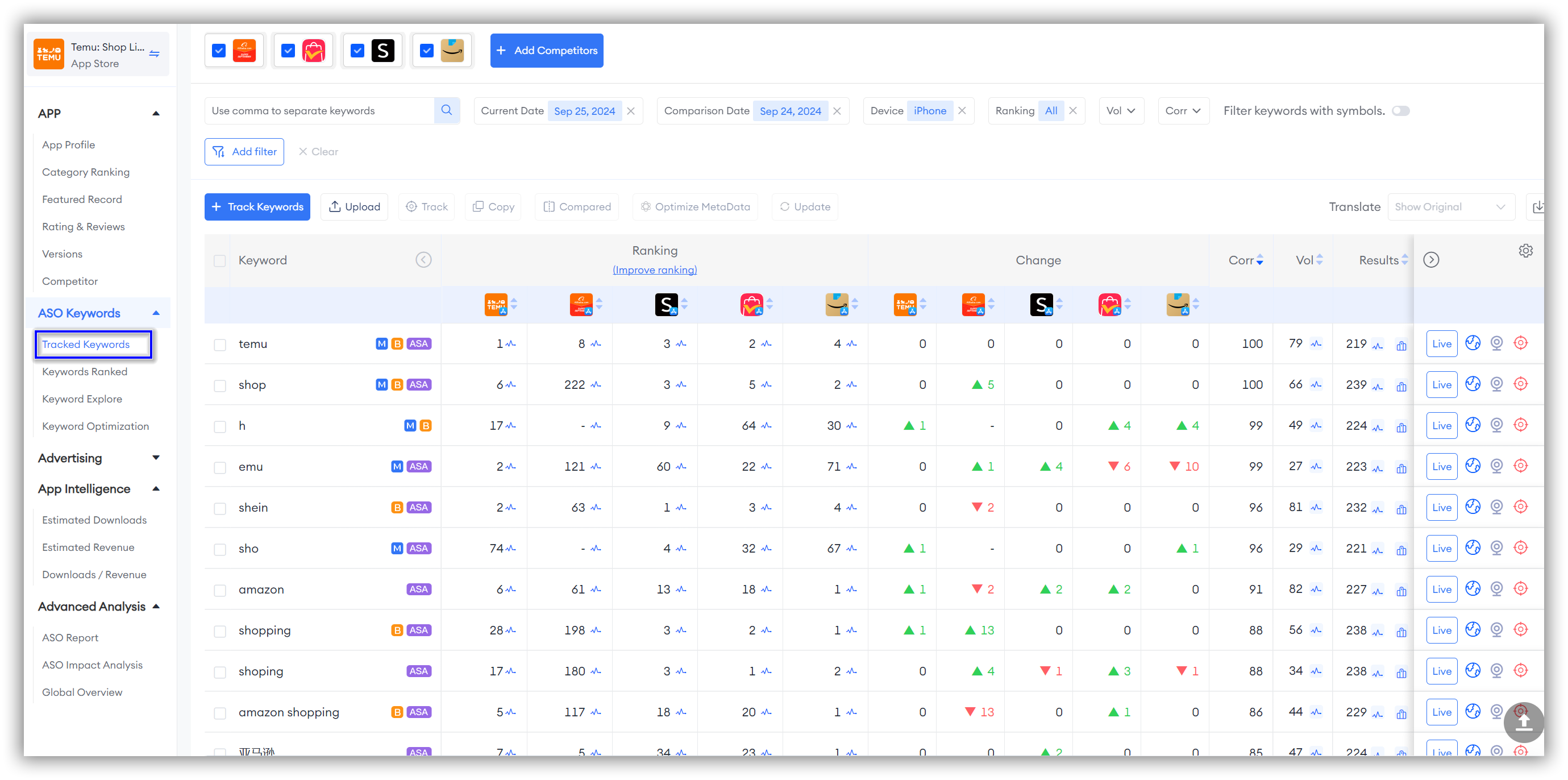
Tracked Keywords not only provide basic monitoring functions but also offer data visualizations to help you more quickly assess the value of these keywords.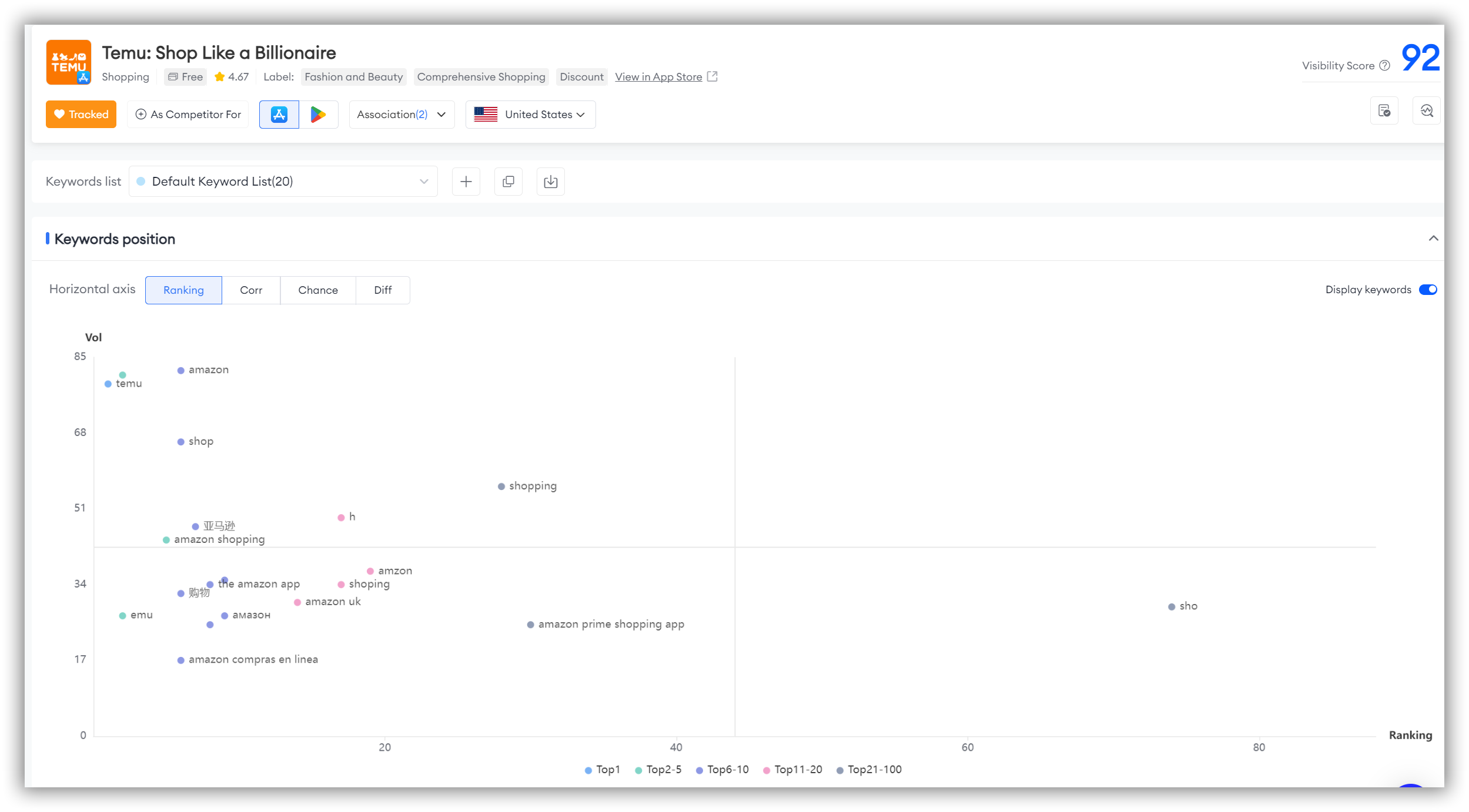
👏 Expert Tips: In the final decision-making stage, don't rely solely on ranking dimensions. You should also consider relevance, opportunities, and difficulties. A comprehensive approach will help you fully understand the value and potential of keywords, allowing you to develop a more effective and feasible ASO strategy.
💡 Want to know how to choose ASO keywords? This article will provide you with relevant guidance: How to Perform ASO Keyword Research and Boost Your App's Visibility
Shared and Unique Keywords
In addition to the top 10 keywords, it's also essential to study Shared and Unique Keywords. Relying solely on the top 10 keywords of your competitors might make your traffic sources too singular. If the rankings of these keywords drop, your traffic could be significantly affected. Shared and Unique Keywords can help you diversify risks and increase the exposure of your app.
Many of the Shared and Unique Keywords may include long-tail keywords. Although these keywords have lower search volumes, they also face less competition and often have higher conversion rates. Optimizing these keywords can bring stable and high-quality traffic.
Shared Keywords are the keywords that both you and your competitors are using. Analyzing these keywords can help you understand the level of market competition and identify optimization opportunities.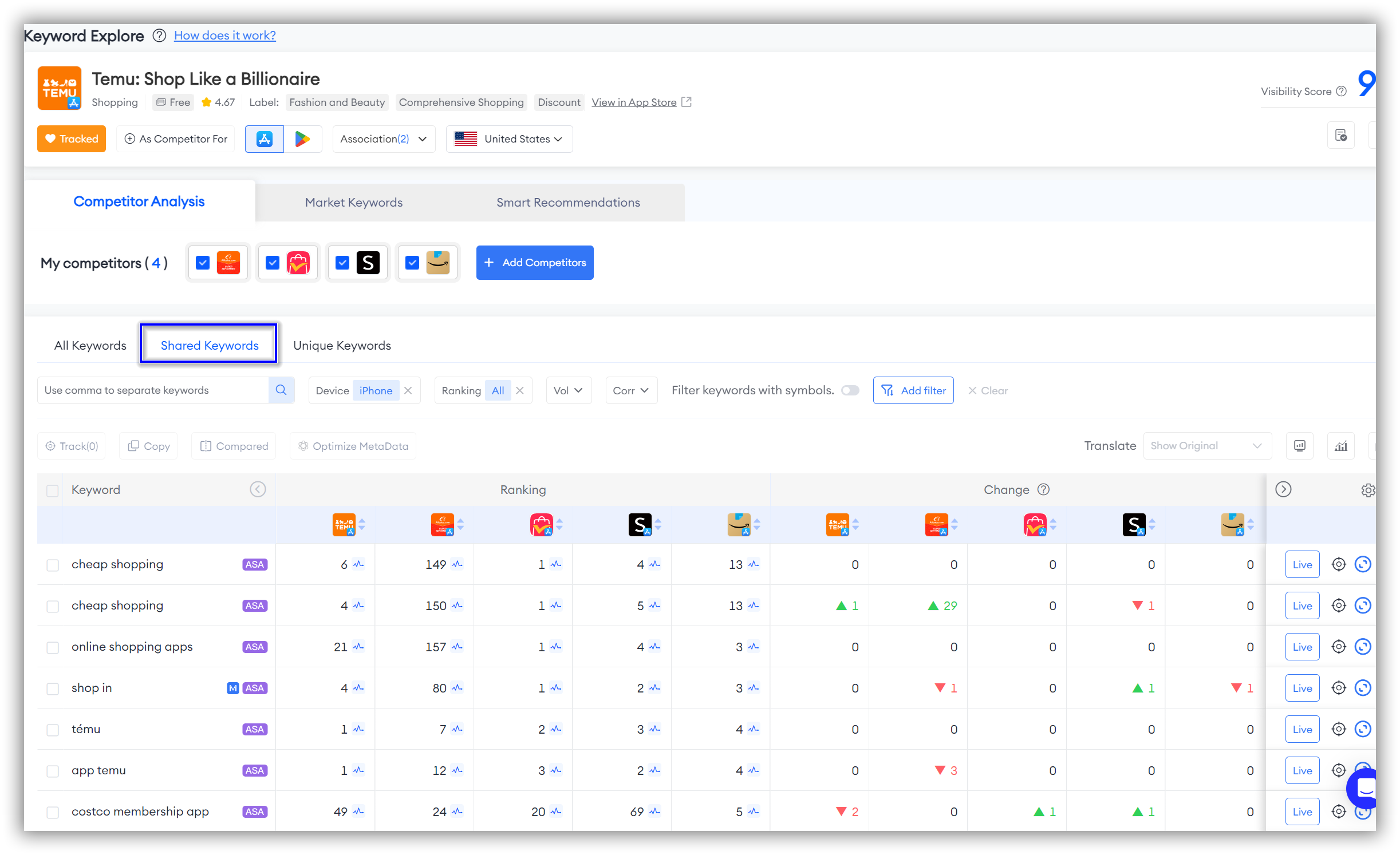
👉 Click here to explore the shared keywords of your app!
📒 Note: Don't forget to track the selected "shared keywords."
Unique Keywords are the keywords that are used exclusively by you or your competitors. Studying these keywords can help you discover new market opportunities and differentiation strategies.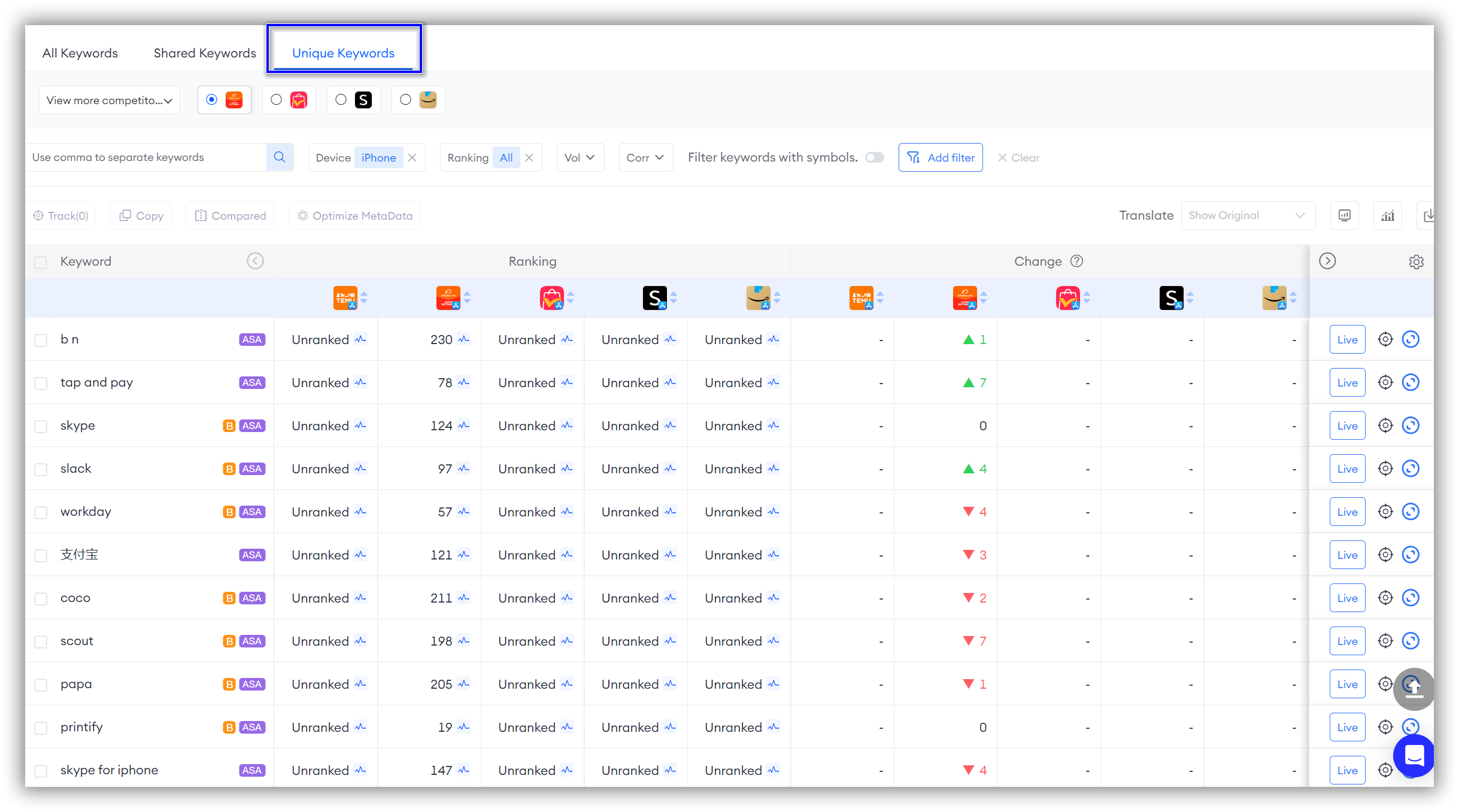
👉 Click here to explore the Unique Keywords of your app!
📒 Note: Don't forget to track the selected "unique keywords."
Analyze Competitors' Metadata Keywords
Understanding the keywords on which your competitors achieve organic rankings can be fascinating. Remember, the placement of keywords in the store listing metadata significantly impacts rankings.
Therefore, you should regularly review your competitors' app titles, short descriptions (Google Play), subtitles (Apple App Store), and descriptions.
FoxData's Keyword Optimization can easily help you identify the keywords included in your competitors' metadata. This allows you to understand their strategies more effectively and make adjustments to your own listings.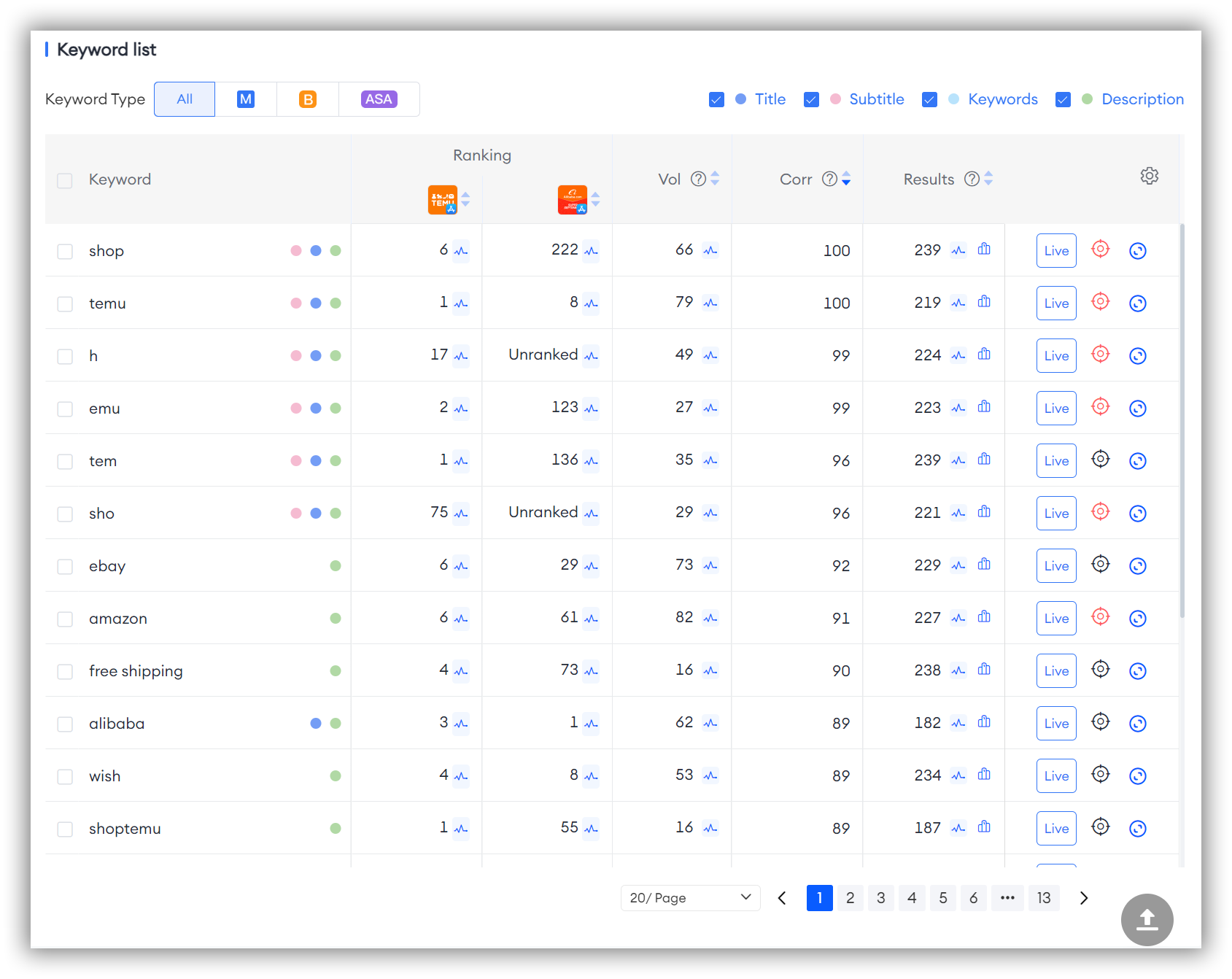
While adjusting your keyword list, you can also test your new ASO metadata in the Metadata Simulator.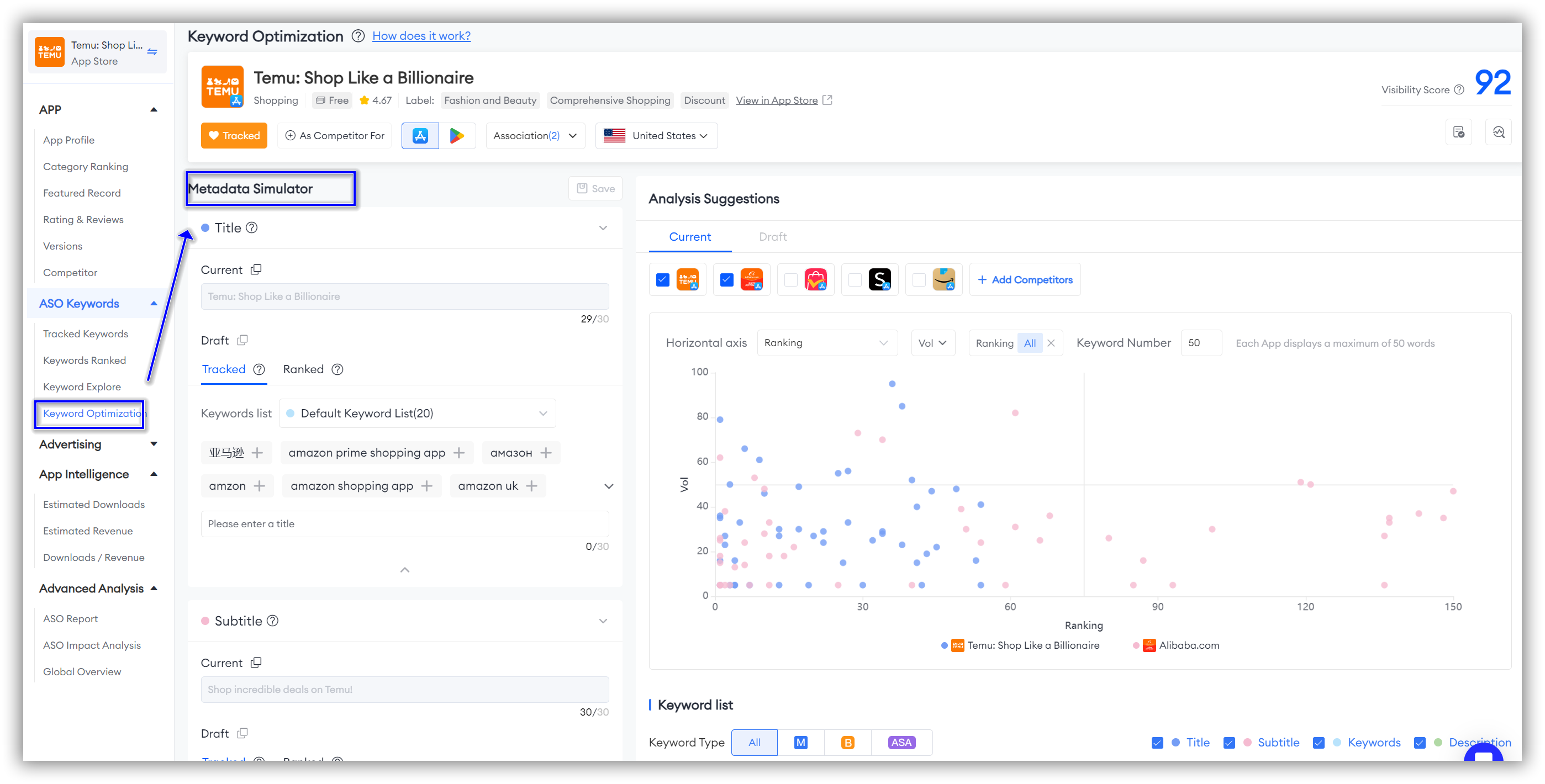
FoxData will provide you with test results showing the changes in keyword rankings.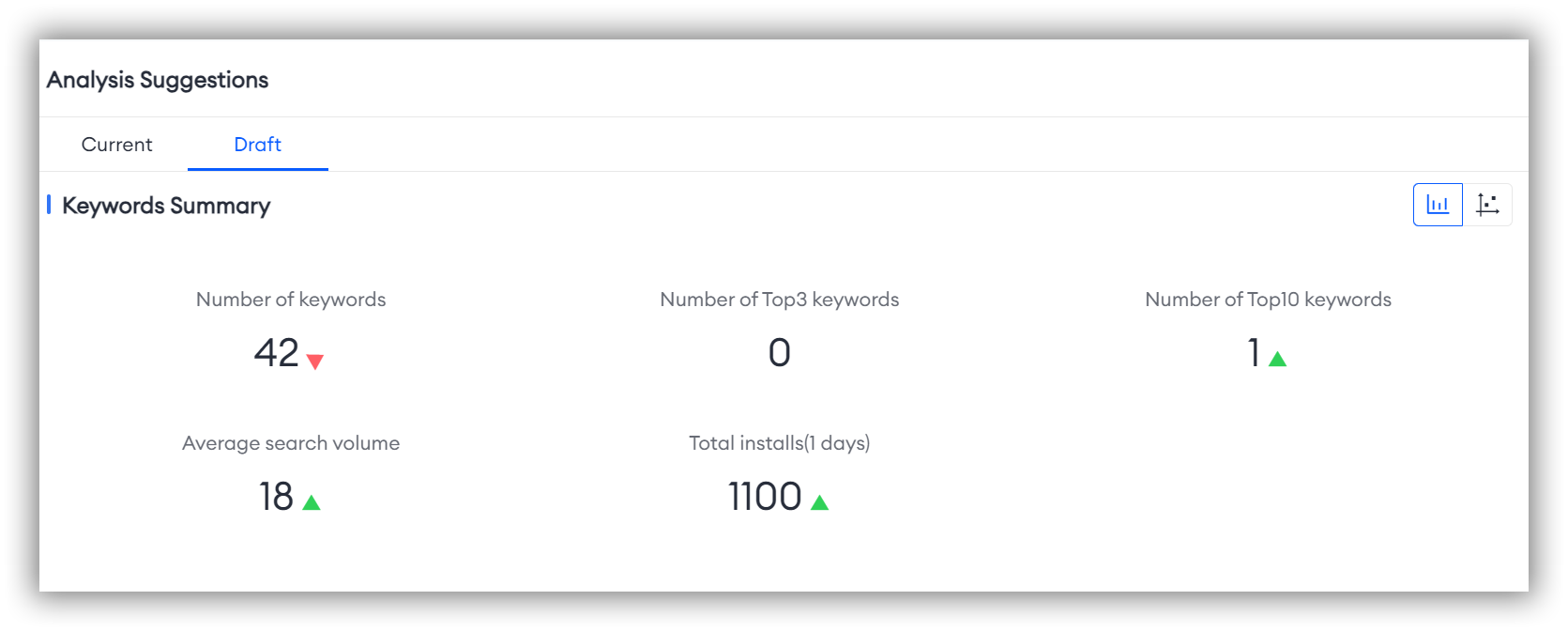
Don't hesitate!
Try out FoxData's ASO Keywords feature now.
It will help you easily analyze your competitors' ASO keyword strategies and gain valuable insights!






